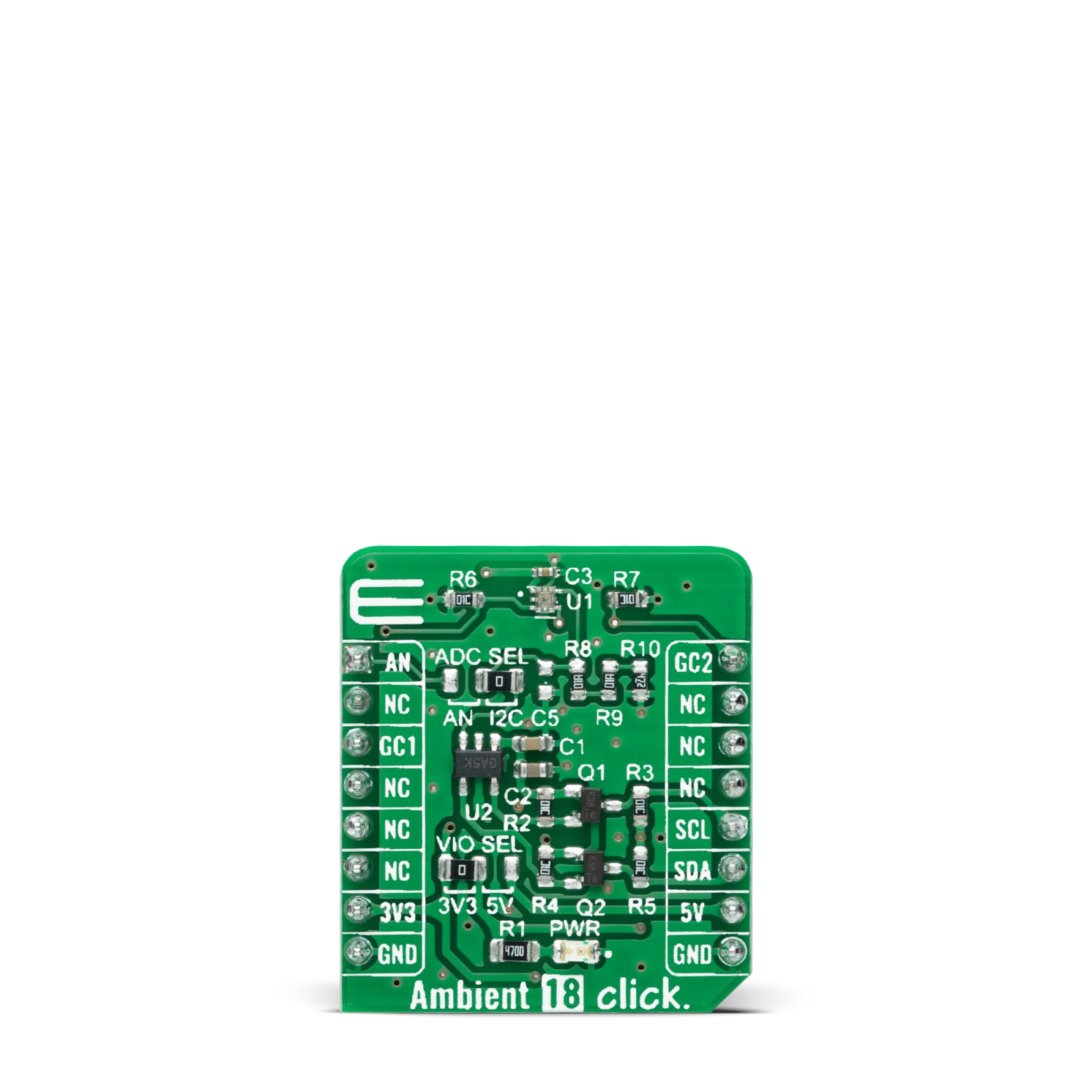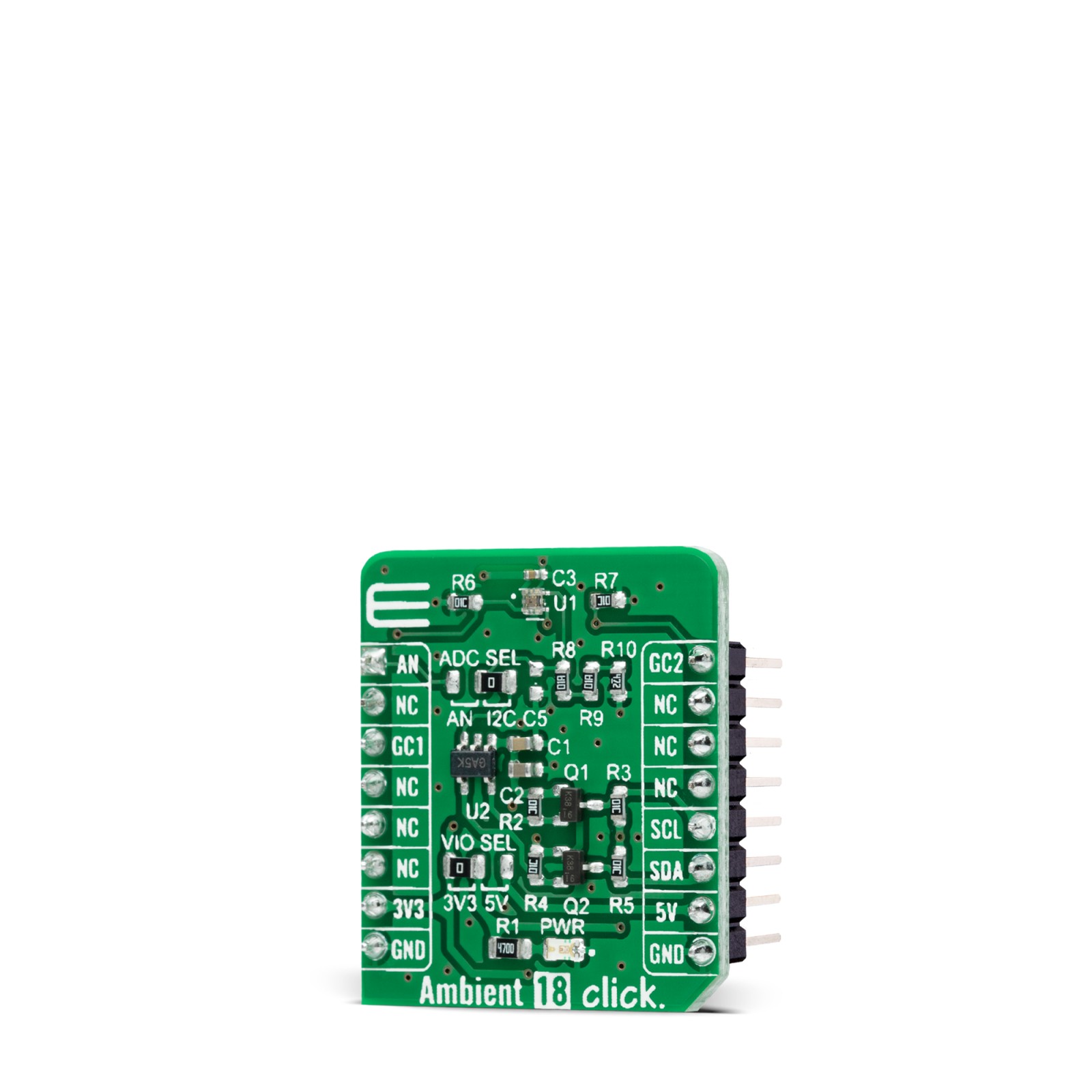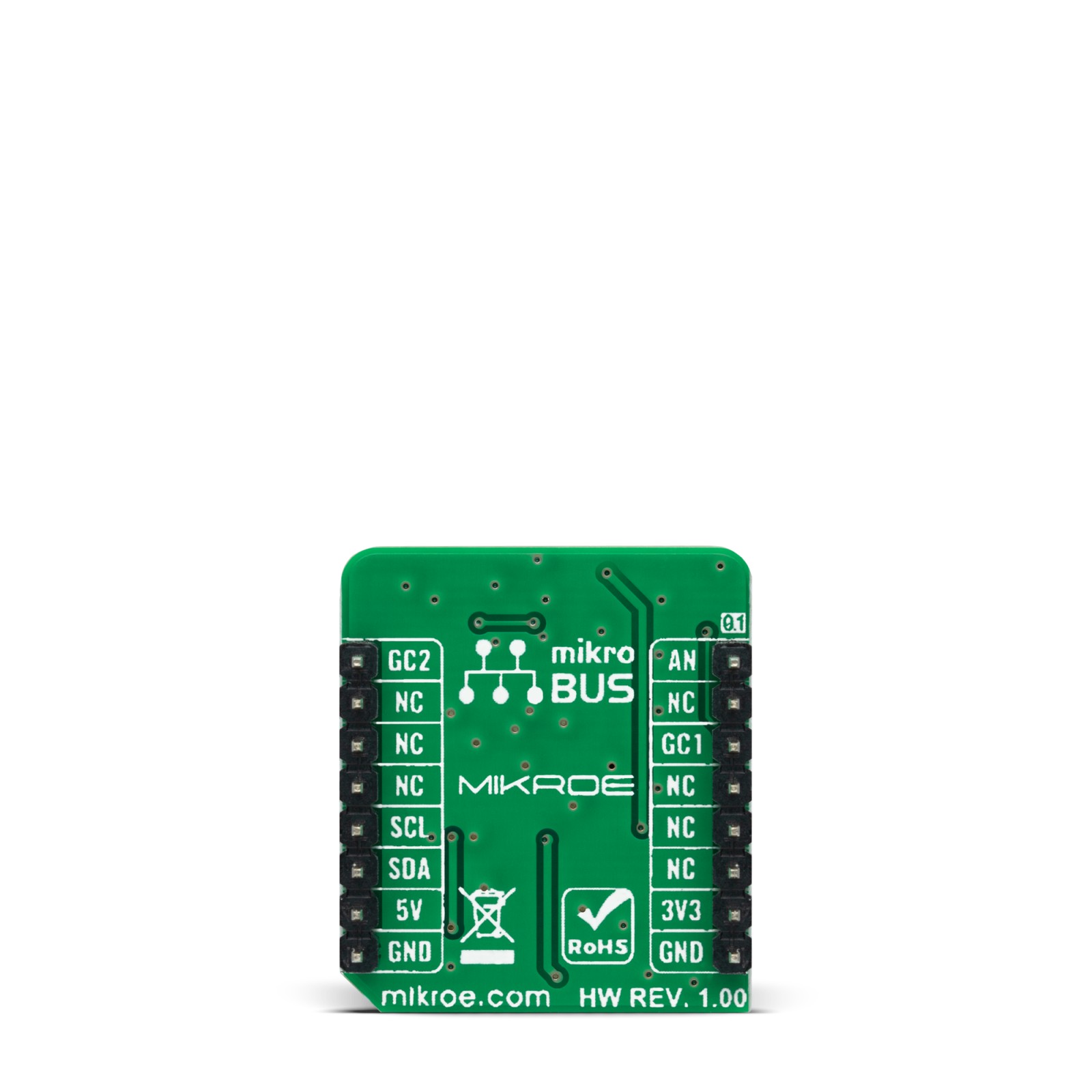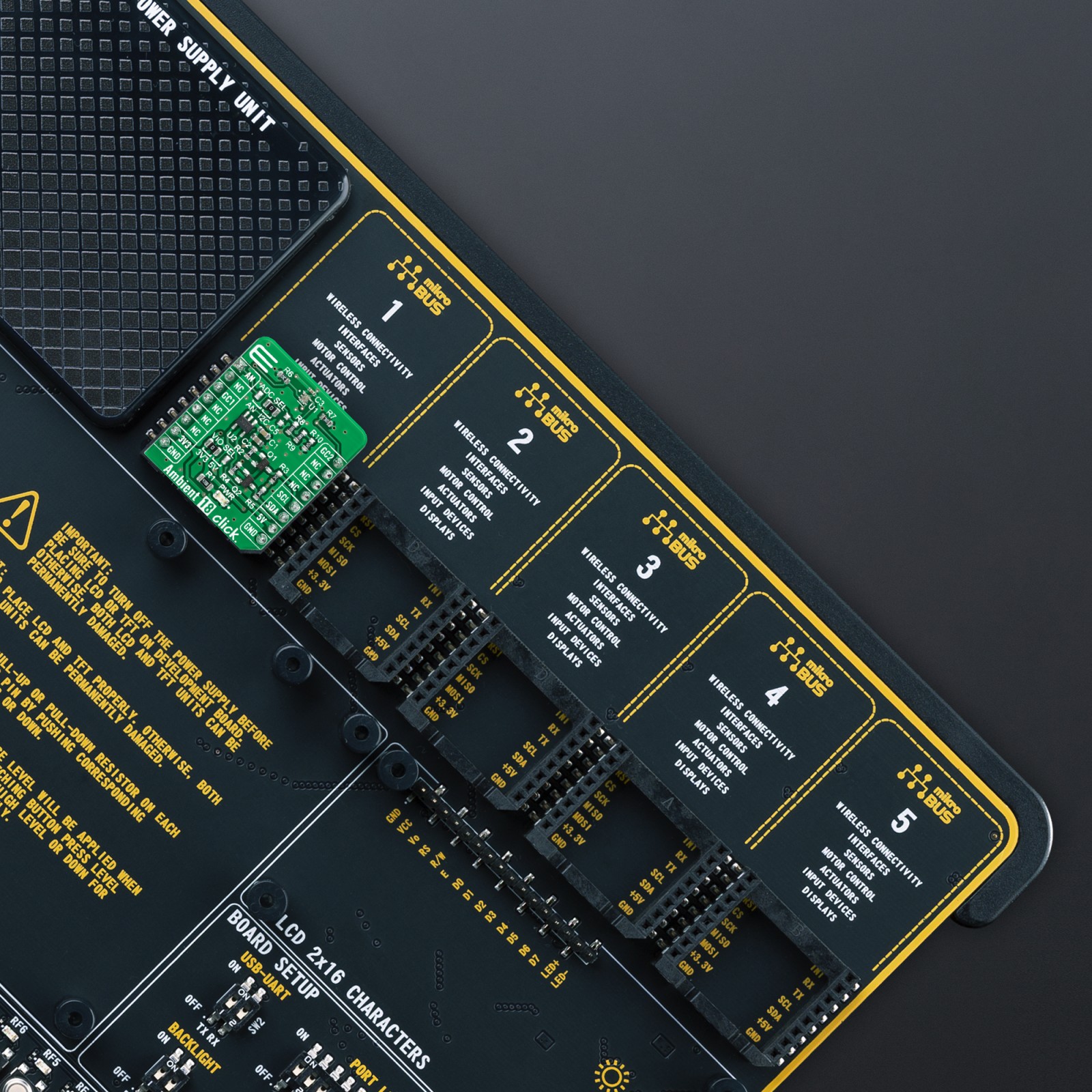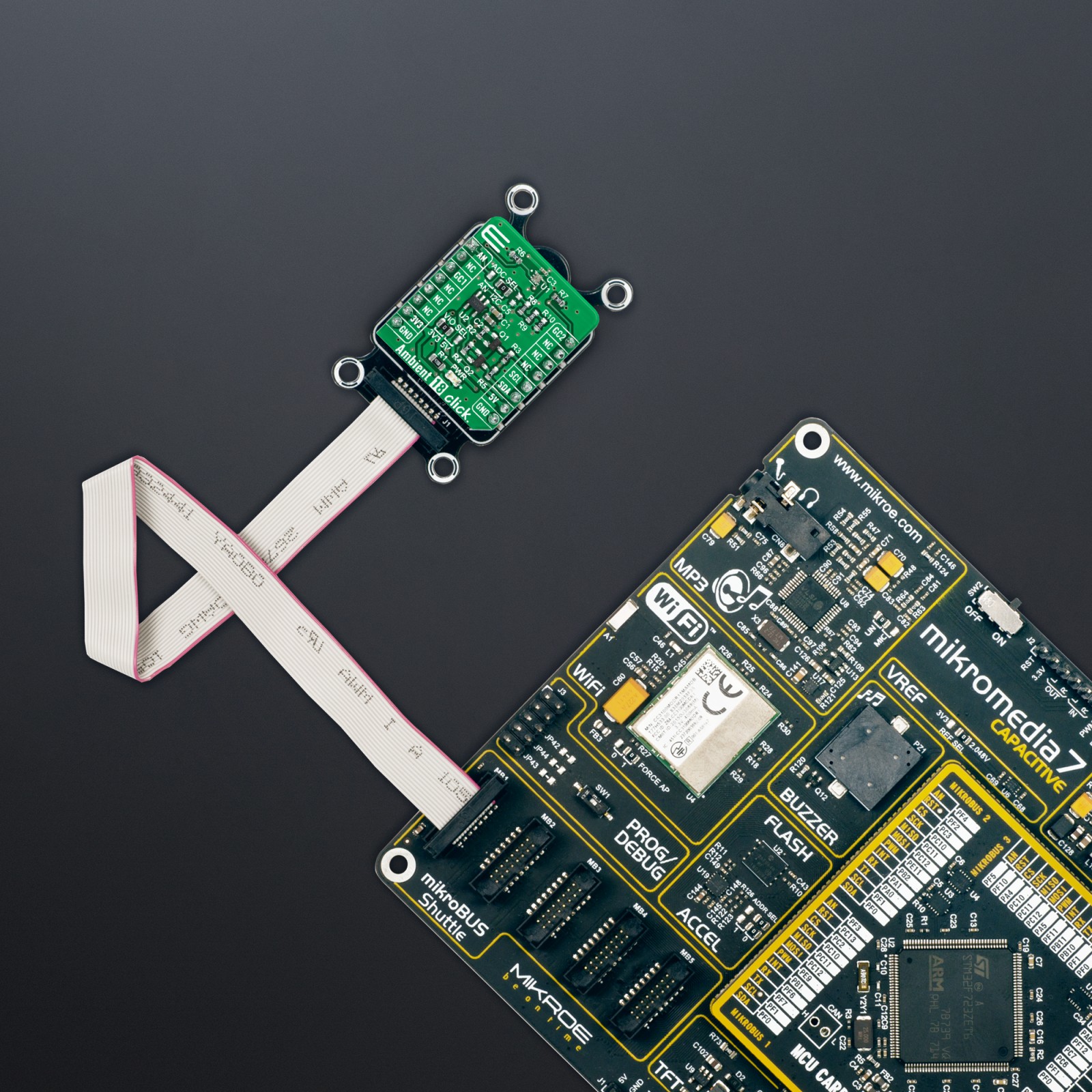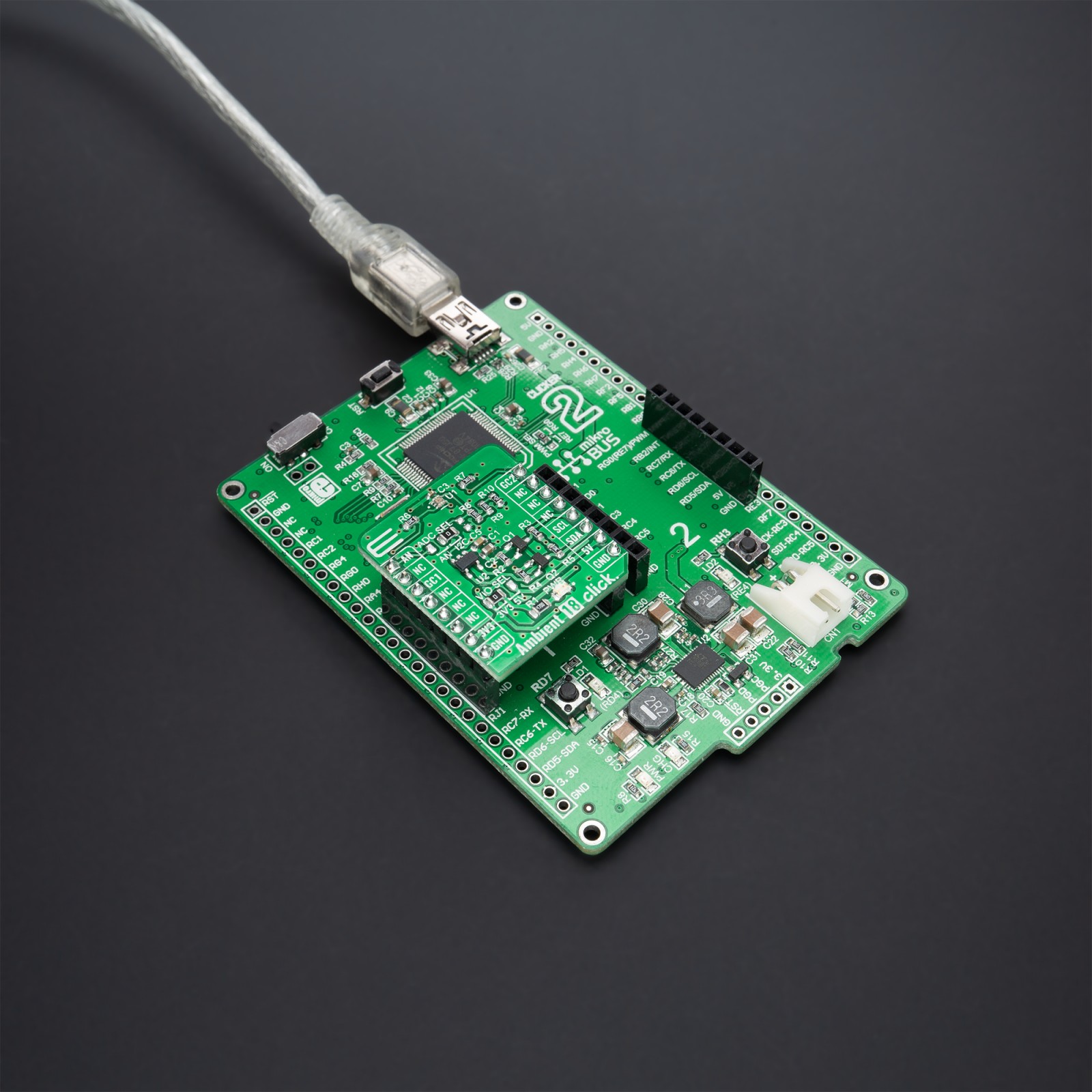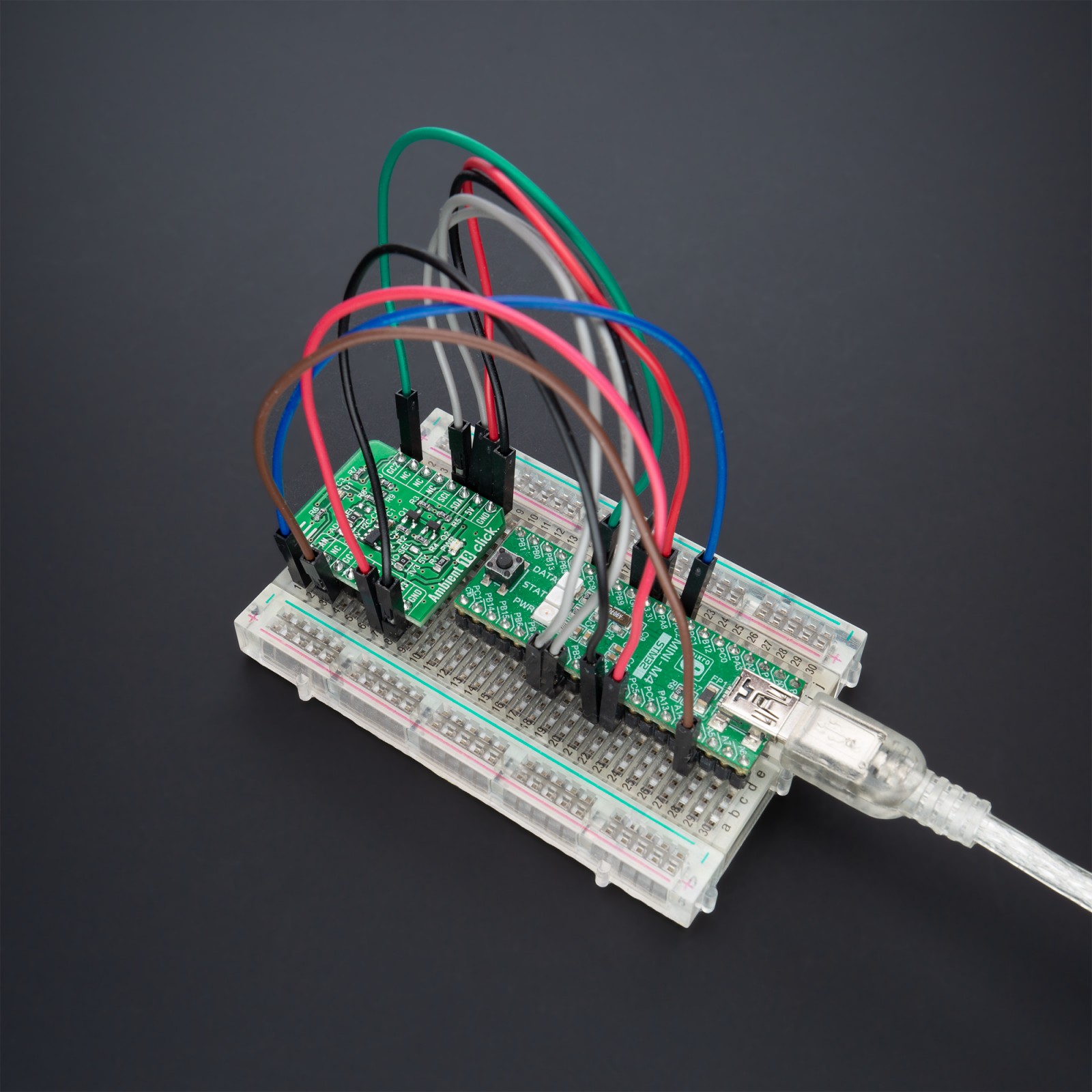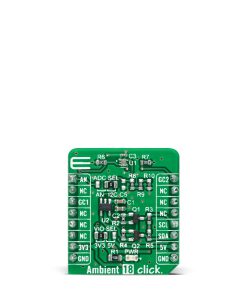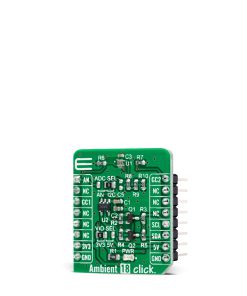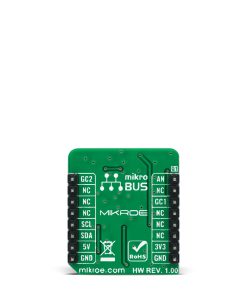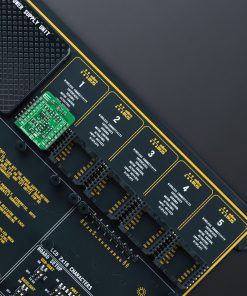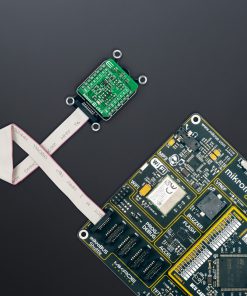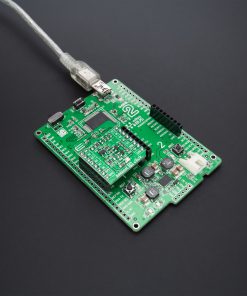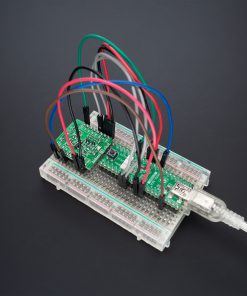Ambient 18 Click
R205.00 ex. VAT
Ambient 18 Click is a compact add-on board used to sense the amount of the present ambient light. This board features the BH1680FVC, an analog current-output ambient light sensor from Rohm Semiconductor. The BH1680FVC can detect a wide range of illuminance up to 10klx and provides excellent responsivity close to the human eyes’ response. Besides, it is also characterized by low sensitivity variation across various light sources, a built-in shutdown function, and the ability to process the output signal in analog or digital form. This Click board™ is the most suitable for obtaining ambient light data for adjusting brightness in applications that require power saving and better visibility.
Ambient 18 Click is supported by a mikroSDK compliant library, which includes functions that simplify software development. This Click board™ comes as a fully tested product, ready to be used on a system equipped with the mikroBUS™ socket.
Stock: Lead-time applicable.
| 5+ | R194.75 |
| 10+ | R184.50 |
| 15+ | R174.25 |
| 20+ | R167.69 |

